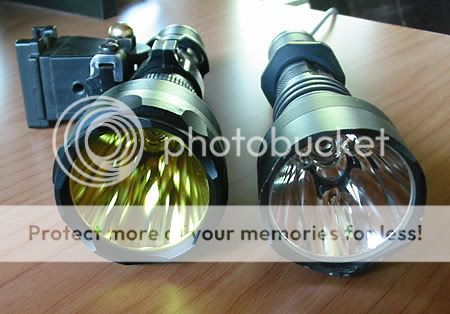When you put a colored lens in front of a light, it works like a filter that only allows that particular color to pass through - all the other color is blocked. So if I put a red lens in front of a light source that has only 20% of its output in the red part of the spectrum, then my now-filtered light will only be 20% as bright as it was before.
The limitation lies in the LED itself; our common high-output cool white LEDs are excellent at emitting blue and yellow-green, but the rest of the spectrum is barely emitted at all. You might have noticed this when viewing different colors using your LED light, that some shades of blue and neon green/yellow almost seem to fluoresce as if under a blacklight, while any shade of red appears very muted, often shifted away somewhat towards orange. This is because of the limited-spectrum nature of the LED, it does a few colors very well and a few others poorly.
The new warm-tint LEDs have essentially the same spectral rendering but with a little extra orange/red thrown in. You can't reproduce this effect using a filter on a cool white LED, because the filter would *only let the lens color through* and block the rest.
Also keep in mind that tint and color rendering are two different things. An LED can have a warm tint and still have poor color rendering (meaning everything would look warmer compared to a cool white LED, but there would be no difference in what range/how many colors are rendered)


